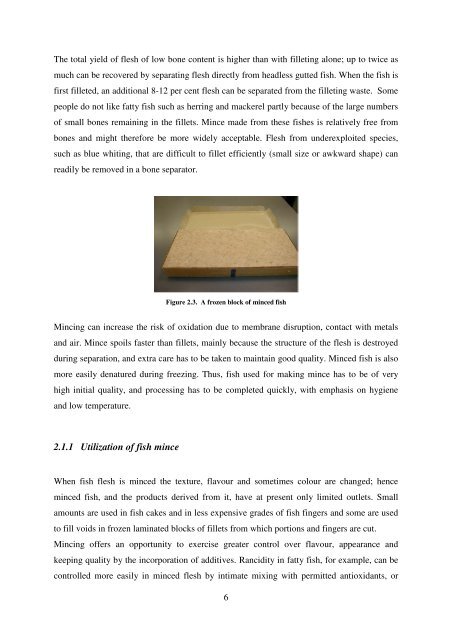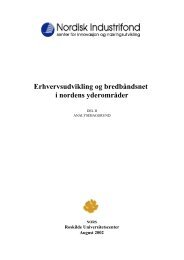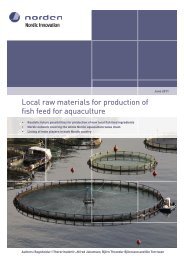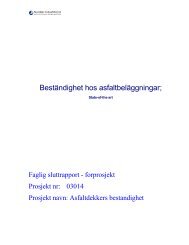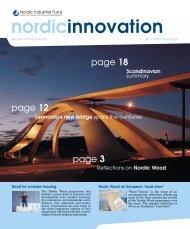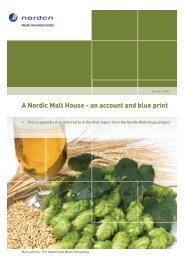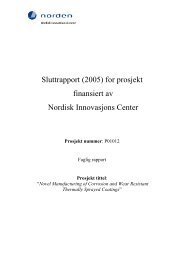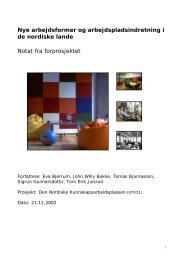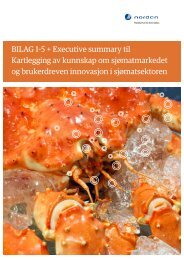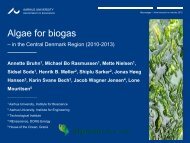Value added fish by-products - Nordic Innovation
Value added fish by-products - Nordic Innovation
Value added fish by-products - Nordic Innovation
You also want an ePaper? Increase the reach of your titles
YUMPU automatically turns print PDFs into web optimized ePapers that Google loves.
The total yield of flesh of low bone content is higher than with filleting alone; up to twice as<br />
much can be recovered <strong>by</strong> separating flesh directly from headless gutted <strong>fish</strong>. When the <strong>fish</strong> is<br />
first filleted, an additional 8-12 per cent flesh can be separated from the filleting waste. Some<br />
people do not like fatty <strong>fish</strong> such as herring and mackerel partly because of the large numbers<br />
of small bones remaining in the fillets. Mince made from these <strong>fish</strong>es is relatively free from<br />
bones and might therefore be more widely acceptable. Flesh from underexploited species,<br />
such as blue whiting, that are difficult to fillet efficiently (small size or awkward shape) can<br />
readily be removed in a bone separator.<br />
Figure 2.3. A frozen block of minced <strong>fish</strong><br />
Mincing can increase the risk of oxidation due to membrane disruption, contact with metals<br />
and air. Mince spoils faster than fillets, mainly because the structure of the flesh is destroyed<br />
during separation, and extra care has to be taken to maintain good quality. Minced <strong>fish</strong> is also<br />
more easily denatured during freezing. Thus, <strong>fish</strong> used for making mince has to be of very<br />
high initial quality, and processing has to be completed quickly, with emphasis on hygiene<br />
and low temperature.<br />
2.1.1 Utilization of <strong>fish</strong> mince<br />
When <strong>fish</strong> flesh is minced the texture, flavour and sometimes colour are changed; hence<br />
minced <strong>fish</strong>, and the <strong>products</strong> derived from it, have at present only limited outlets. Small<br />
amounts are used in <strong>fish</strong> cakes and in less expensive grades of <strong>fish</strong> fingers and some are used<br />
to fill voids in frozen laminated blocks of fillets from which portions and fingers are cut.<br />
Mincing offers an opportunity to exercise greater control over flavour, appearance and<br />
keeping quality <strong>by</strong> the incorporation of additives. Rancidity in fatty <strong>fish</strong>, for example, can be<br />
controlled more easily in minced flesh <strong>by</strong> intimate mixing with permitted antioxidants, or<br />
6


